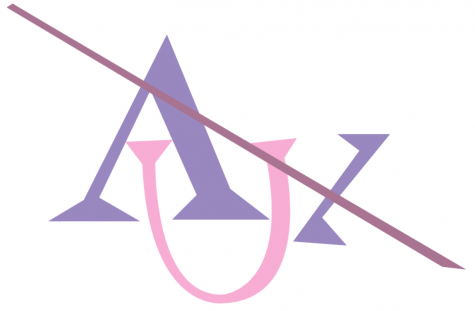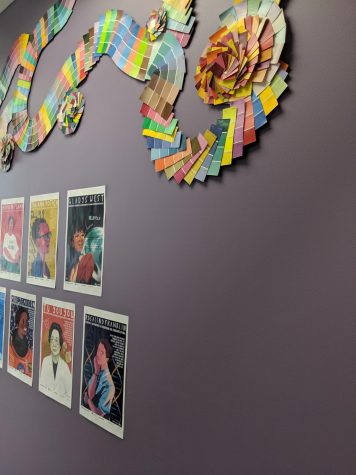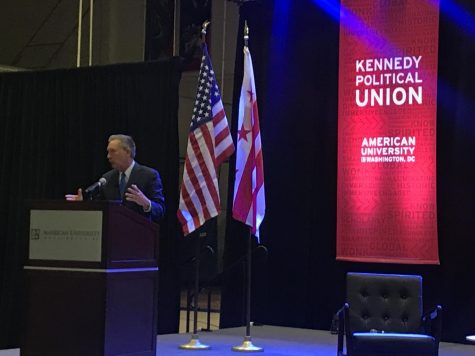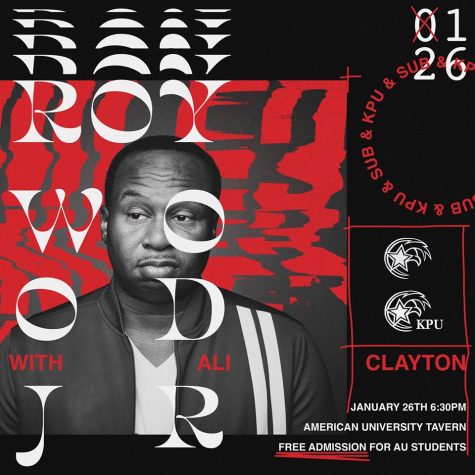Recognizing Asexual Identities: ACING THE SEXUALITY SPECTRUM
As the issue of sexual consent continues to appear in the news, another facet of sexual attraction is increasingly entering the conversation after long being ignored.
“I had always just kind of assumed I was straight,” said American University junior Tori Gilkeson. “Because that was how you were supposed to be.”
Gilkeson identifies as asexual, meaning they do not experience sexual attraction.
Growing up in a Southern conservative Christian family limited Gilkeson’s options to learn about other sexualities. Gilkeson, eventually discovered solace on the Internet as a high school freshman when they discovered the term “asexual” on Tumblr.
Gilkeson is not alone. Their experiences echo the rising awareness of asexuality in recent years, made possible by the abundance of accessible information online that has helped progress the conversation over what sexuality looks like. One of these resources is the Asexual Visibility and Education Network, founded by activist David Jay, whose work has allowed tens of thousands to share their experiences with each other.
According to AVEN’s website, “There is no litmus test to determine if someone is asexual. Asexuality is like any other identity—at its core, it’s just a word that people use to help figure themselves out.” For Jay, having a broad definition of asexuality encouraged an open community where people were free to learn and explore themselves.
“There is no litmus test to determine if someone is asexual. Asexuality is like any other identity—at its core, it’s just a word that people use to help figure themselves out.”
“Though they are virtual encounters, the stories of real people I encounter online are validating and helpful for understanding myself and my identity,” Gilkeson said.
As the coordinator of LGBTQ programming at the Center for Diversity and Inclusion, Matthew Bruno has noticed increased interest in asexual identities over the six years they have worked at AU.
“In my first year, no one had ever come up to me to talk about asexuality,” Bruno said. “Especially on college campuses, you’re seeing LGBTQ groups being more inclusive of all facets of sexuality.”
The number of student groups making an effort to include the ace spectrum in their communities has increased within the past couple of years, according to Inside Higher Ed.
AU’s Queers and Allies (abbreviated as Q&A) made an effort to address this in 2014, when it began discussing the creation of a bisexual, pansexual, fluid and asexual group within the organization, currently known as PFAB.
A Q&A subcommittee, the Queer Women’s Advocacy Group, addressed asexual and aromantic identities at its annual event, “Not Your Average Sex Talk,” for the first time last year.
“It was not traditional,” said Lex Loro, the executive director of Q&A. “Sometimes in sex talks we forget that people may identify as ace, but it doesn’t mean that they will never engage in sexual activity or that they don’t care about the sexual safety of their friends or community members.”
This solved the problem that many sex-positive discussions often create. The sex-positive ideology encourages open expression and practice of safe sex, but often leads to what Gilkeson observed as “the implication that sexual attraction is both an essential part of humanity and necessary for love, making asexuals less than human or broken in some way and incapable of love or real emotion.”
When talking about the significance of consent, sex-positive discussions also usually fall short of recognizing asexuality. “If it is always true that it is okay to say ‘no’ to sex at any point, it must be acceptable that the answer might always be ‘no,’” Gilkeson said.
Sophomore Erin Connolly, the co-coordinator of Q&A’s PFAB community, agreed.
“One way sex positivity needs to be changed is to not just say that sex is good for everyone,” Connolly said. “We need to move towards something that actively thinks about different identities instead of saying ‘Oh yeah, do whatever you want.’”

PFAB began activities this school year.
“The old executive director [of Q&A, Tyler Bowders] mentioned wanting to include a space that was more specifically for bi/pan people,” Loro said. “Emmett [Patterson, deputy director] and I also wanted it to be for fluid and ace people as well, and we were all in agreement of that.”
Action finally took place after increasing pressure to do so from Q&A members.
“It was very clear that people who identified as non-monosexual, so not attracted to just one gender, felt that the spaces that already existed were lacking in providing support and programming for bi, pan and ace people,” Loro said.
The decision to group the four identities together eventually occurred due to concern over potential lack of turnout or staffing if the groups were separate.
“My fear is that if you create too many new things at once, things fall through the cracks,” Loro said. She says that when the ace community grows large enough to need its own subgroup, Q&A would accommodate for that.
Connolly and co-coordinator Austin Morgan, a sophomore at AU, both agreed with Loro’s comments, and they emphasized the member-driven quality of the PFAB group.
“This is just more of establishing a community on campus,” Morgan said. “The goal right now is to find out what the people on the campus want and need from us, and what we can do to address that.”
Efforts to include marginalized identities mean a lot to students like Gilkeson, who rarely see themselves represented unless they bring up the topic their own sexualities. Within asexuality alone, acknowledging the vast spectrums of sexual and romantic attraction sets the stage for a more inclusive campus.
“A lack of attraction is not necessarily a total lack of sexual desire, and is certainly not an inability to have sex, though there are asexuals who do fall into any or all of those categories,” Gilkeson said. “There are as many ways to be asexual as there are asexual people.”






